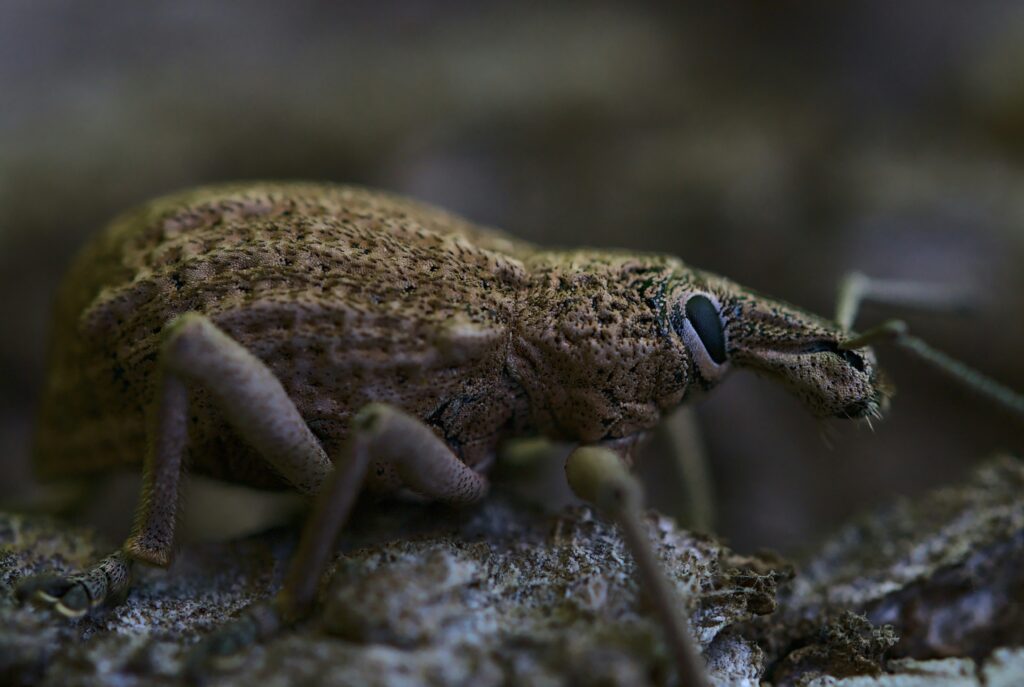Why Go Natural?
Chemical pesticides might get rid of pests fast, but they leave a wider mess behind. Over time, they degrade soil health, killing off the good microbes that plants need to thrive. Pollinators—bees, butterflies, even helpful beetles—take the hit too, and without them, your garden’s long-term productivity takes a serious blow.
Water runoff is another issue. These chemicals don’t just stay in the dirt—they leach into groundwater, lakes, and streams, affecting far more than just your backyard. The ripple effect is real.
Going natural isn’t just about being eco-conscious. It leads to stronger, more resilient plants. Healthier soil. A balanced ecosystem right in your yard. If you’re growing food or want a space where kids and pets can roam without worry, skipping the chemical route is a no-brainer. You trade quick fixes for deeper, lasting health—and that’s a swap worth making.
Spotting Trouble Early
Catching pest issues early can mean the difference between a thriving garden and a struggling one. By staying vigilant and knowing what to look for, you can act before an infestation takes hold.
Common Warning Signs
Keep an eye out for these early symptoms that may indicate a pest problem:
– Chewed or ragged leaves – A sign of caterpillars, beetles, or slugs
– Stunted growth – Could be caused by root-dwelling insects or sap-sucking pests
– Curling, yellowing, or spotting on leaves – May point to aphids, whiteflies, or fungal diseases
– Holes in fruit or vegetables – Often due to worms, borers, or beetles
– Sticky residue (honeydew) – Typically left behind by aphids, scale insects, or mealybugs
Diagnosing Pests by Plant Symptoms
Understanding which pest is responsible can help you choose the safest and most effective remedy. Here’s a general guide:
– Aphids: Appear in clusters on new growth; leaf curling and sticky residue are common signs
– Spider mites: Look for tiny webs and speckled yellow leaves
– Slugs and snails: Leave slime trails and irregularly shaped holes in broad leaves
– Leaf miners: Cause winding lines inside leaves as larvae tunnel through
– Caterpillars: Eat large sections of leaves, often found resting underneath them during the day
If you’re unsure, take photos and compare them to resources from your local extension service or gardening forums.
When Bugs Are Actually Helping
Not all pests are villains. Some insects might look alarming but are actually doing your garden a favor:
– Ladybug larvae: Eat aphids but often get mistaken for pests themselves
– Parasitic wasps: Lay eggs inside harmful caterpillars and aphids
– Ground beetles and spiders: Often consume garden pests and keep populations in check
Before taking action, make sure the insect isn’t one of your plant allies. A diverse, balanced garden is often its own best defense.
Remedy 1: Companion Planting
Some plants just play better together. Companion planting is about more than boosting flavor or saving space—it’s pest control in disguise. The right plant pairings can naturally repel common insects while attracting beneficial ones.
Take basil. This herb isn’t just great next to tomatoes in a salad—it protects them in the soil, too. Basil’s strong scent confuses pests like whiteflies and aphids. Marigolds? They’re the all-purpose bouncer of the garden. Their roots emit compounds that fend off nematodes, while the flowers throw off bugs like beetles and aphids. Try nasturtiums near squash or cucumbers—they lure aphids away like a decoy.
To make a real dent with companion planting, aim for diversity. A balanced garden matrix mixes herbs, flowers, root crops, and legumes. That variety disrupts pest behavior and builds resilience. Drop in some lavender at the border, plant garlic between rows, mix leafy greens and brassicas to throw off cabbage moths.
But, skip the random pairings. Not everything gets along. Onions and beans, for example, tend to stunt each other. Strong-scented herbs like rosemary can smother delicate herbs or confuse pollinators if overdone. Also, overcrowding chokes airflow and invites mold. Give your plants a little elbow room. Think like a bouncer and a designer: protect, repel, and keep things flowing.
Smart companion planting isn’t complicated—but winging it won’t cut it either. Plan, plant with intention, and let nature do its thing.
Remedy 2: Homemade Sprays
Sometimes pests don’t need a chemical warhead—just the right mix of pantry staples. These three DIY insect repellents are easy to make, safe for your garden, and surprisingly effective when used right.
1. Neem Oil + Castile Soap Mix
Neem oil messes with insect hormones and cuts into their reproduction cycles. Mix 1-2 teaspoons of neem oil with a few drops of castile soap in a quart of warm water. Shake well and spray directly onto leaves—especially the undersides—every 7–10 days. Best applied in the early morning or after sundown to avoid burning leaves.
2. Garlic Chili Spray
This one packs a punch. Blend 1 head of garlic and 1–2 hot chili peppers with 2 cups of water. Let it sit overnight, strain, and mix the liquid with an additional quart of water and a tablespoon of mild liquid soap. Spray where needed, especially on plants prone to aphids or caterpillars. Test on a small area first—this stuff is hot.
3. Baking Soda Antifungal Rinse
Fungal issues often invite pests, so prevention helps. Mix 1 tablespoon of baking soda with 1 tablespoon of oil (like vegetable or neem) and a small squirt of dish soap in a gallon of water. Spray every 7–14 days to keep powdery mildew and other fungus in check. Don’t overdo it—too much baking soda can affect soil pH.
For max impact, always spray after checking the forecast—avoid rain that’ll wash it all off. Reapply after a storm or heavy watering. Early morning or late evening is ideal to prevent leaf burn and give the formulas time to work.
Homemade doesn’t mean weak. Use these right, and you’ll keep your garden healthier, naturally.
Remedy 3: Natural Predators
Not all bugs are bad. In fact, some are your best allies in the fight for a healthy garden. Ladybugs, lacewings, and praying mantises are natural predators—they hunt down aphids, mites, and other pests that wreck plants.
Encouraging these insects doesn’t take much. Skip the pesticide-heavy sprays and build small habitat zones instead. Use native plants to draw them in. Add flat rocks where bugs can rest and sun themselves. A shallow dish of water lined with pebbles offers a simple drink station without attracting mosquitoes. These zones don’t need to be big—just balanced.
Avoid clear-cutting your garden space or going too minimalist. Helpful bugs need places to hide and hunt. Think less showroom, more ecosystem. A few weeds? Not the end of the world.
Bottom line: the right insects can do what chemicals can’t—keep populations in check without upsetting the whole system. The trick is learning who belongs, and making them feel at home.
Remedy 4: Soil Health = Plant Strength
Healthy soil isn’t just about better veggies—it’s your first line of defense against pests. Composting takes kitchen scraps and yard waste and transforms them into nutrient-rich material teeming with life. That rich, black compost helps plants grow stronger and more resilient. When your plants are healthy, they’re less likely to get stressed—and stressed plants are what pests target most.
The secret lies in the microbial ecosystem. Good compost is loaded with bacteria and fungi that work behind the scenes to protect plant roots. They crowd out harmful microbes, improve nutrient absorption, and help plants develop tougher cell walls. It’s like an immune system upgrade for your garden.
You also want to invite the right underground crew. Worms churn soil, keeping it loose and full of oxygen. Fungi, especially mycorrhizal types, form symbiotic relationships with roots, extending their ability to gather nutrients. You don’t need to buy fancy boosters—compost, leaf litter, and letting things go a little wild does the trick.
Good soil doesn’t happen overnight, but once it’s in place, you’ll see fewer pests and stronger plants doing more of the work on their own.
Remedy 5: Crop Rotation and Seasonal Adjustments
One of the simplest ways to defend your garden is to stop planting the same thing in the same place every year. Static layouts invite repeat pests—your tomatoes draw the same invaders season after season if you don’t move them around. Rotating crops not only breaks pest cycles but also gives soil time to recover nutrients, especially when you switch between heavy feeders (like corn) and light ones (like beans).
It’s not just about pests. Different seasons bring different threats. Aphids thrive in spring; caterpillars surge in late summer. Knowing what’s likely to show up lets you plant accordingly. Hardy greens in early spring, then pest-resilient varieties in summer. By fall, switch to crops like garlic or onions that pests tend to avoid.
The bottom line: keep the bugs guessing. A thoughtful rotation plan plus smart seasonal choices make your garden less predictable—and a lot healthier.
When to Step It Up
Not every garden bug can be handled with garlic spray and hope. Sometimes, things go sideways. If pests return right after treatment, or you’re seeing widespread damage (think curling leaves, sticky residue, or stunted growth across multiple plants), it might be time to go beyond DIY.
Start by looking for OMRI-certified pest control options—that means the product meets organic compliance standards and skips the nasty synthetics. These options are solid when used sparingly: think horticultural oils, insecticidal soaps, or targeted biological controls. Stay focused: treat only what’s affected, and keep beneficial insects in mind.
When it’s clearly beyond your pay grade, bring in help—but choose wisely. Not all pest pros are created equal. Look for companies that specialize in organic or low-impact methods. Ask what products they use, how often they treat, and whether they prep your garden for long-term balance. The best ones will talk more about prevention than poison.
Bottom line: DIY has its limits. When escalation is needed, go with precision—not just power.
Bonus Insights
Homemade sprays are effective, but not exactly shelf-stable by nature. To stretch their lifespan, always store them in airtight glass containers—preferably amber or dark blue—to block out light. Keep them cool, too. A fridge is your friend here. Shake before each use, especially with oil-based mixes like neem or garlic chili sprays. Most sprays are best within 1–2 weeks, tops, so make small batches. If it starts to smell funky or separate oddly, toss it and mix fresh.
For indoor plants, natural pest control has to be gentler. Avoid anything too strong or oily that might clog pores or burn leaves. A diluted neem solution (about 1 tsp per quart of water with a drop of mild soap) works well on spider mites or whiteflies. You can also use a quick apple cider vinegar trap for fruit flies or a damp cloth to wipe down pests by hand—simple but effective.
If you’re timing your strategy with the seasons, it’s worth checking out this support article on Year-Round Landscaping Tasks: A Comprehensive Checklist.
Final Thoughts
Natural pest control isn’t a silver bullet—it’s a commitment. Quick fixes might knock pests back temporarily, but long-term results come from building balance. That means paying attention to the early signs, staying consistent with simple remedies, and feeding your soil the good stuff. Healthy plants don’t just survive pests—they resist them.
The real trick? Make observation your habit. Walk your garden. Notice the changes. Adjust as needed. Over time, the system starts working for you instead of against you. When your soil’s alive, your plants are stronger. When you stay ahead of problems, you need fewer treatments. In the end, fewer pests show up when the plants don’t invite them over in the first place. That’s natural control.




